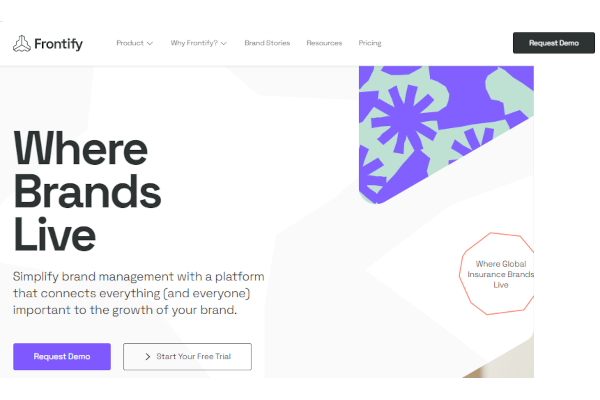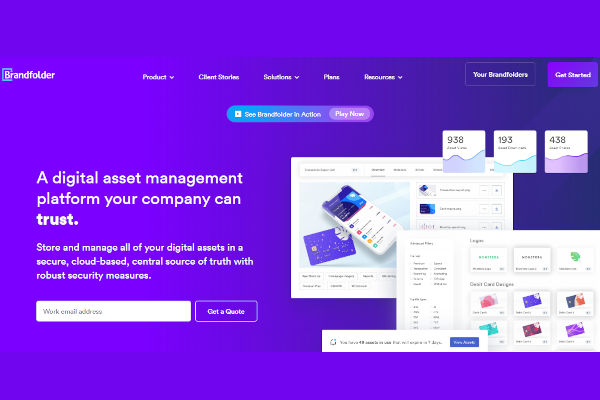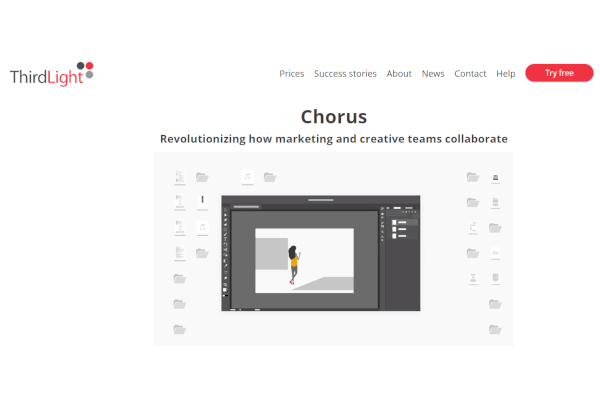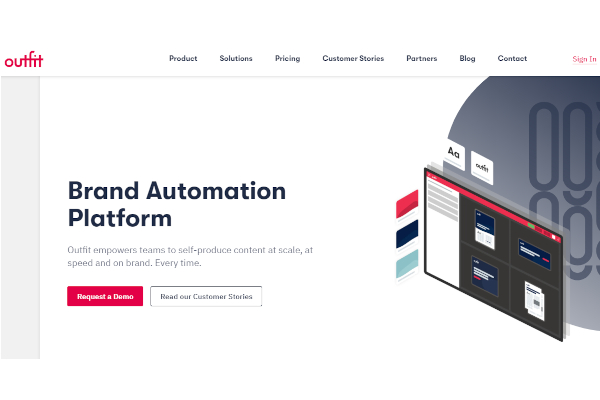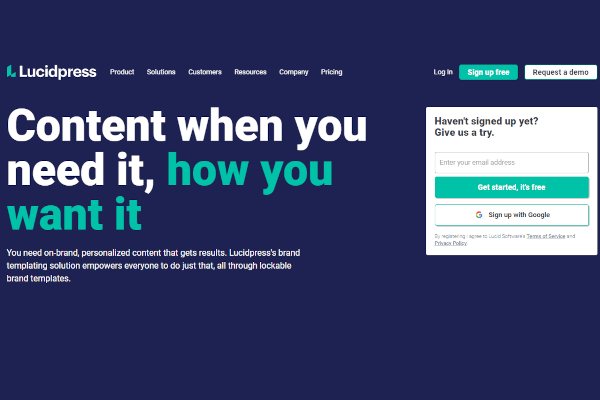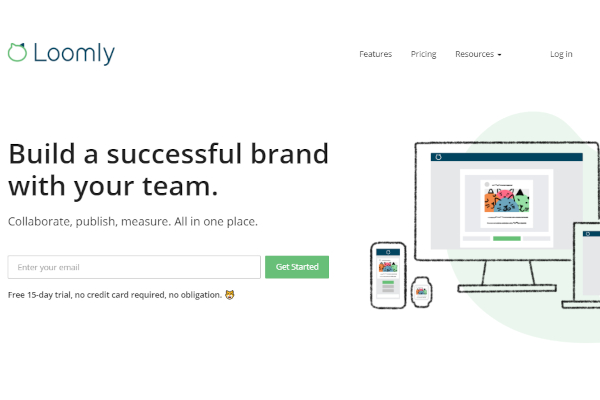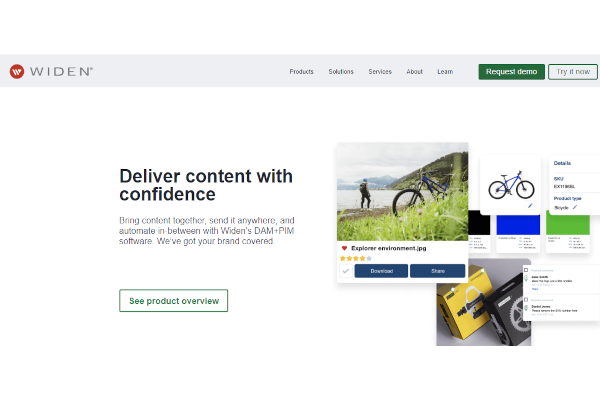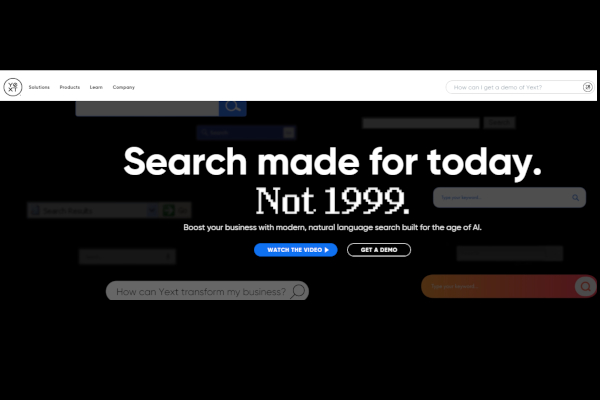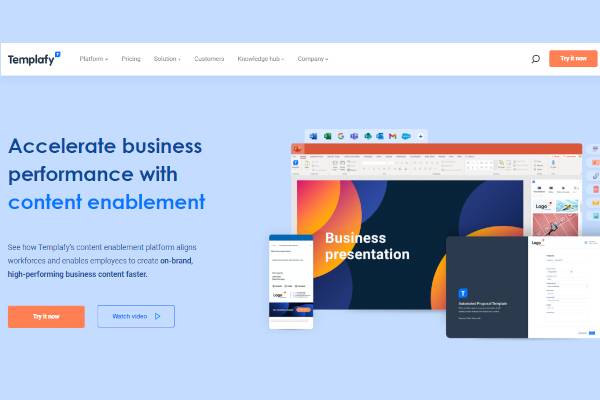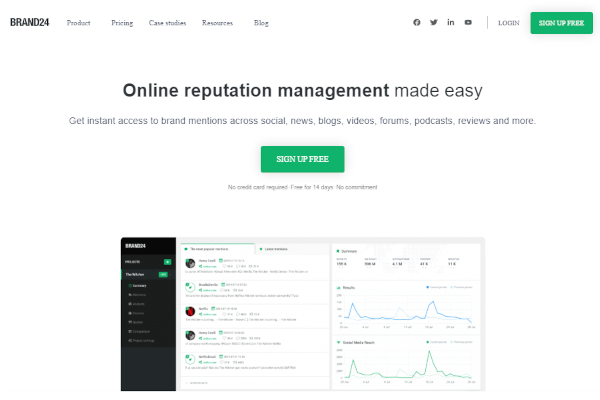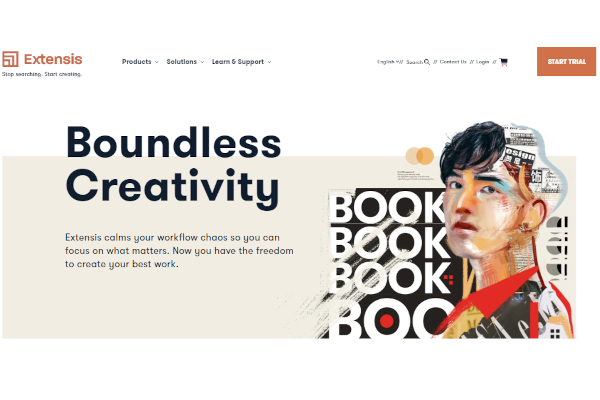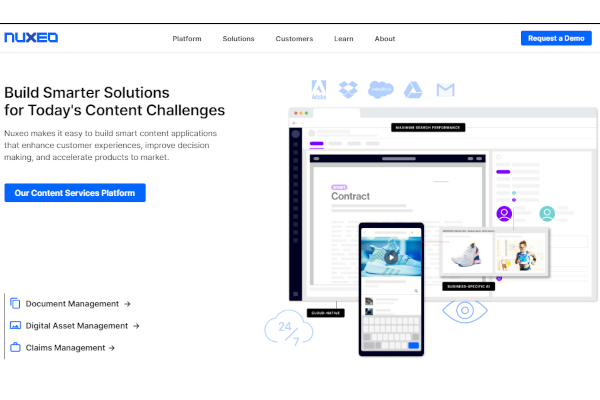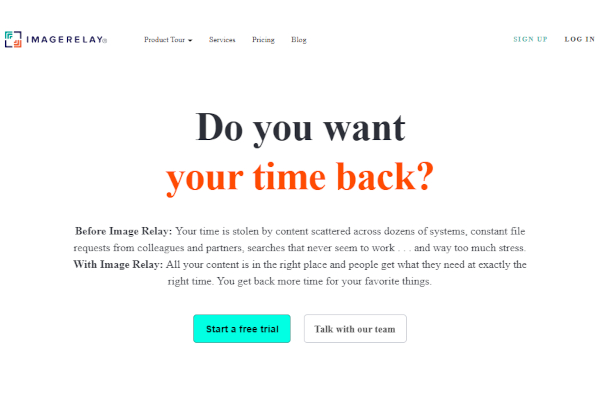Improved data quality results in more informed decision-making throughout the organization. The more reliable the data, the more confident you can be in your judgments. Effective data management reduces risk and can result in consistent performance improvements.
15+ Brand Management Software
1. Frontify
2. Bynder
3. Brandworkz
4. Brandfolder
5. Third Light
6. Outfit
7. Lucidpress
8. Loomly
9. Widen Collective
10. Marvia
11. Yext
12. Templafy
13. Brand24
14. Extensis
15. Nuxeo
16. ImageRelay
What Is a Brand Management Software?
Brand Management covers all aspects of your company’s design, delivery, and regulation. You are heavily investing in the development of your brand – you must manage it to succeed. That means the rapid delivery, control, and protection of brand assets while ensuring easy access and consistent use across a company.
How To Have An Effective Brand Management?
A company’s most valuable asset is a consistent, recognizable brand that is visible – clearly and frequently – across traditional and digital platforms. However, managing a brand across constantly changing delivery channels while serving diverse stakeholders and users who require interaction is complicated. Brands must communicate consistently across advertising, editorial, retail sites, user-generated content, and multiple platforms, whether owned, purchased, or earned. While doing so, the brand owner must maintain control of its assets, including maintaining accuracy and currency, retiring obsolete assets, and circulating new ones while keeping a close eye on budget, efficiency, and effectiveness.
It might sound like a daunting job, but it can be as routine as turning on the lights in the morning, with the right technology and the whole organization on board. Here are five tips that you can utilize to stay on top of the brand:
1. Establish Ground Rules
Define the parameters for how the brand should be portrayed. Define the rules that brand assets must follow, from the logo’s Pantone color and clear font to image rights and use cases. Maintain updated and written rules that are easily accessible and understandable to everyone involved in the use of brand assets. Define the parameters for how the brand should be portrayed. Define the rules that brand assets must follow, from the logo’s Pantone color and clear font to image rights and use cases. Maintain updated and written rules that are easily accessible and understandable to everyone involved in the use of brand assets.
2. Workflows should be defined.
Workflows with clear action points enable employees to make the best asset use decisions and understand the scope of their tasks. Transparency in workflows promotes better collaboration and reduces misunderstandings and duplication of effort.
3. Assets Should Be Centralized
To facilitate accessibility and transparency, centralize brand assets where possible. It is easier to see which assets need to be updated, where gaps must be filled, and which goods the firm has at its disposal without wasteful funds on doubling investments or creating rights issues, with all assets in one resource.
4. Regional Marketing Facilitation
Marketing can be more easily adapted to a more customized, personalized customer approach when assets are centralized. It is simpler to choose the best investment, create a single, regionalized version, and make it available to the business. It also means that regional offices, despite their geographical distance, have a “single source of truth” for assets, and brand cohesion is maintained.
5. Bring the customer experience and the brand closer together
Brand management is typically a proactive business policy created, developed, and supported by customer relationships. Centralizing asset management means that customer experts can feed the company, react quickly and develop the brand on this valuable insight.
FAQs
What does it mean to manage a brand?
Brand management is a marketing function that employs strategies that increase over time the perceived value of a product line or brand. Effective brand management enables products to increase their prices and build loyal clients through positive brand associations and images or strong brand awareness.
What is the significance of brand management?
Brands should maintain a consistent tone and feel across all of their touchpoints. Brand managers work to ensure that a brand’s aesthetic and intangible attributes are constant. This includes packaging, the quality of your product or service, marketing campaigns, and your customers’ emotional experience when interacting with your brand.
Is brand management a viable career option?
A Brand Manager is one of the company’s highest-ranking positions, and experienced candidates are typically chosen for the position. To do their job well, a Brand Manager must have a good understanding of the company’s products and services and the market.
Markets and consumers are moving quickly. Companies must follow the trends that have changed. It is easier and faster to identify, using a single asset resource, which areas have to be examined and which assets have to be updated to meet these changeable demands and make it efficient for the company to be relevant to slowing competitors. To find out more ways to enhance your brand management via a centralized content management system and become a responsive, agile, and relevant company, follow these steps and download our sample templates to provide you with guidance.
Related Posts
10+ Best Chemical Software for Windows, Mac, Android 2022
12+ Best Vulnerability Scanner Software for Windows, Mac, Android 2022
4+ Best Bundled Pay Management Software for Windows, Mac, Android 2022
10+ Best Trust Accounting Software for Windows, Mac, Android 2022
10+ Best Patient Portal Software for Windows, Mac, Android 2022
13+ Best Virtual Reality (VR) Software for Windows, Mac, Android 2022
12+ Best Bed and Breakfast Software for Windows, Mac, Android 2022
15+ Best Resort Management Software for Windows, Mac, Android 2022
14+ Best Hotel Channel Management Software for Windows, Mac, Android 2022
12+ Best Social Media Monitoring Software for Windows, Mac, Android 2022
10+ Best Transport Management Software for Windows, Mac, Android 2022
10+ Best Other Marketing Software for Windows, Mac, Android 2022
10+ Best Top Sales Enablement Software for Windows, Mac, Android 2022
8+ Best Industry Business Intelligence Software for Windows, Mac, Android 2022
10+ Best Insurance Agency Software for Windows, Mac, Android 2022

